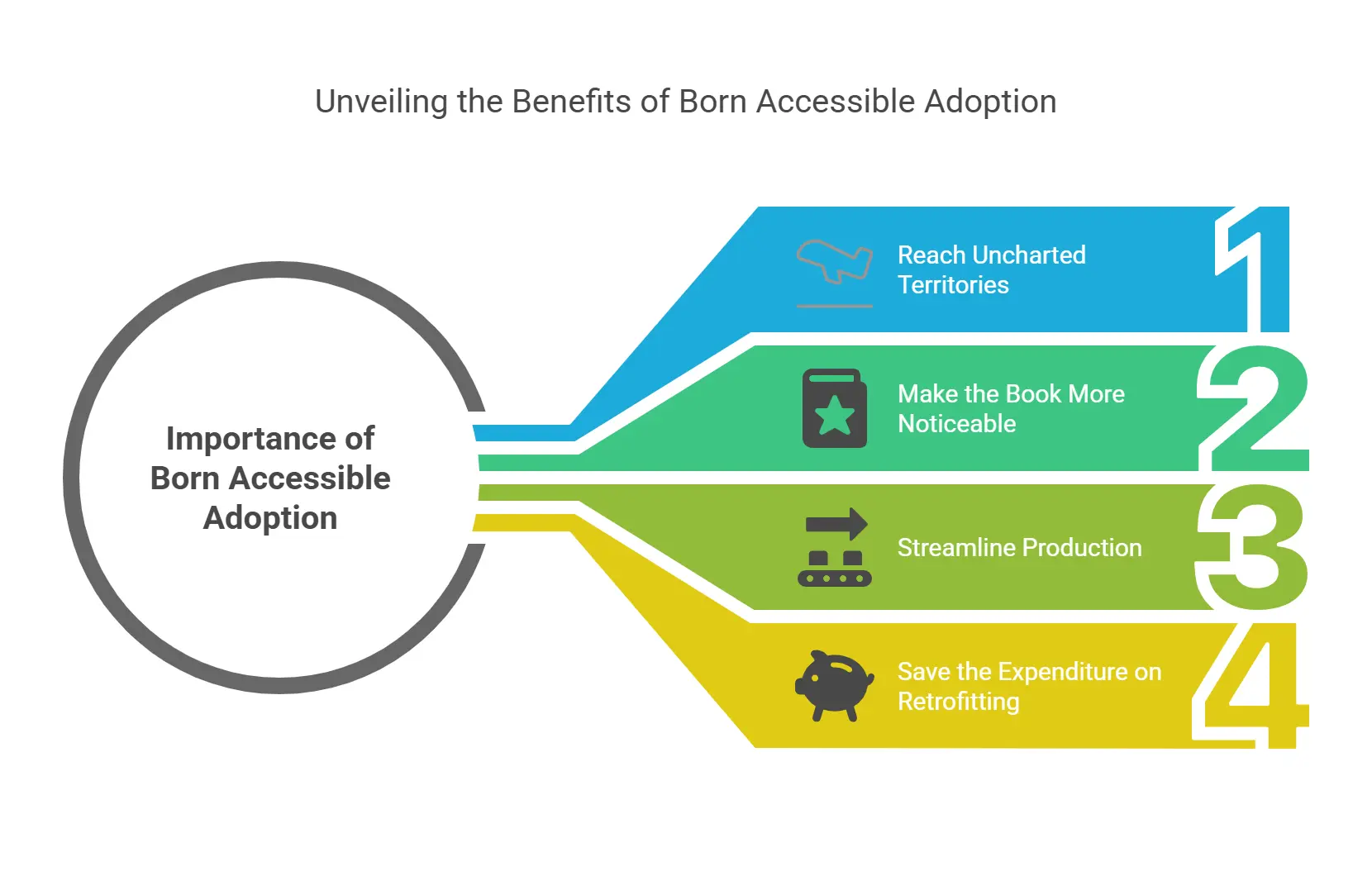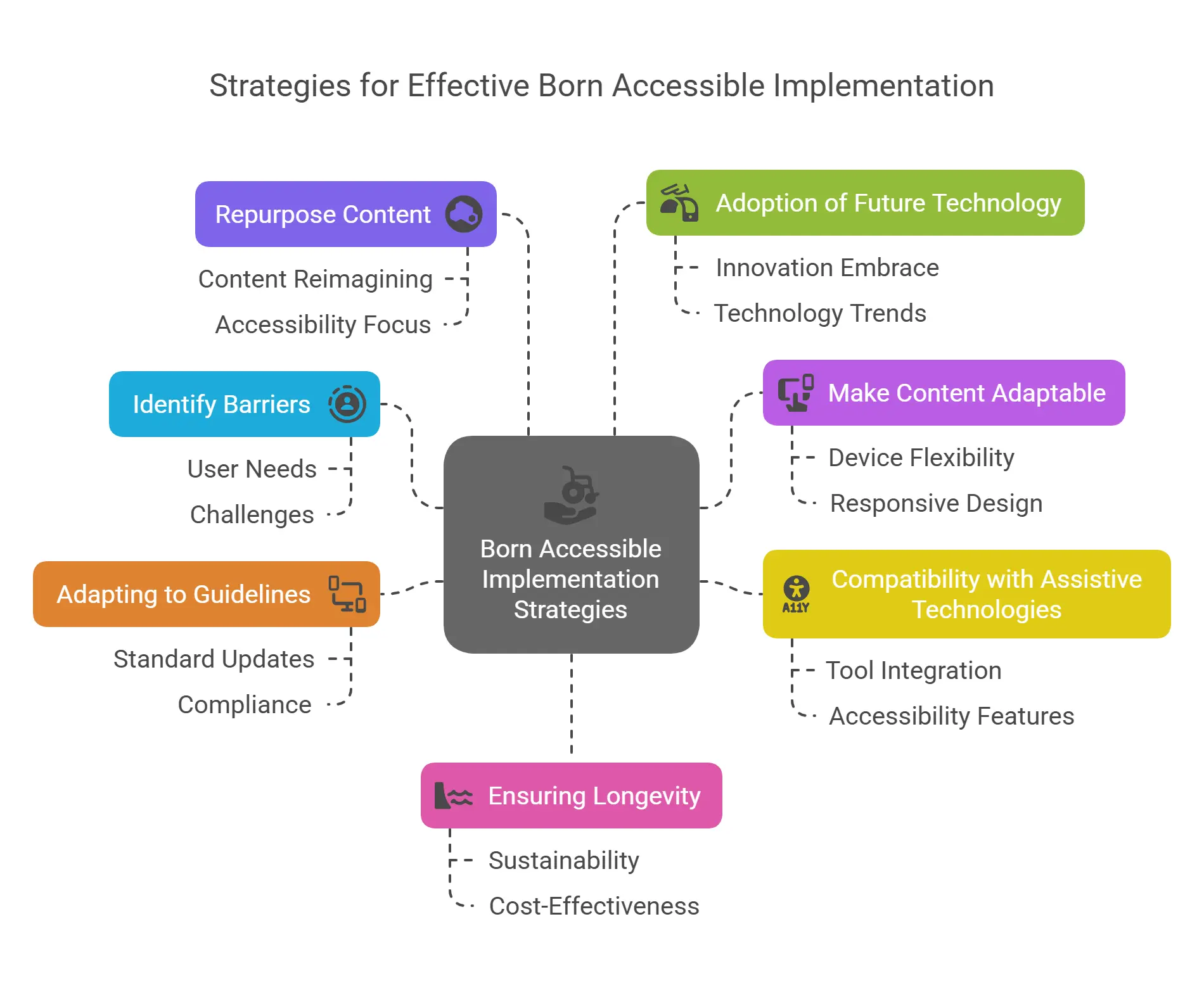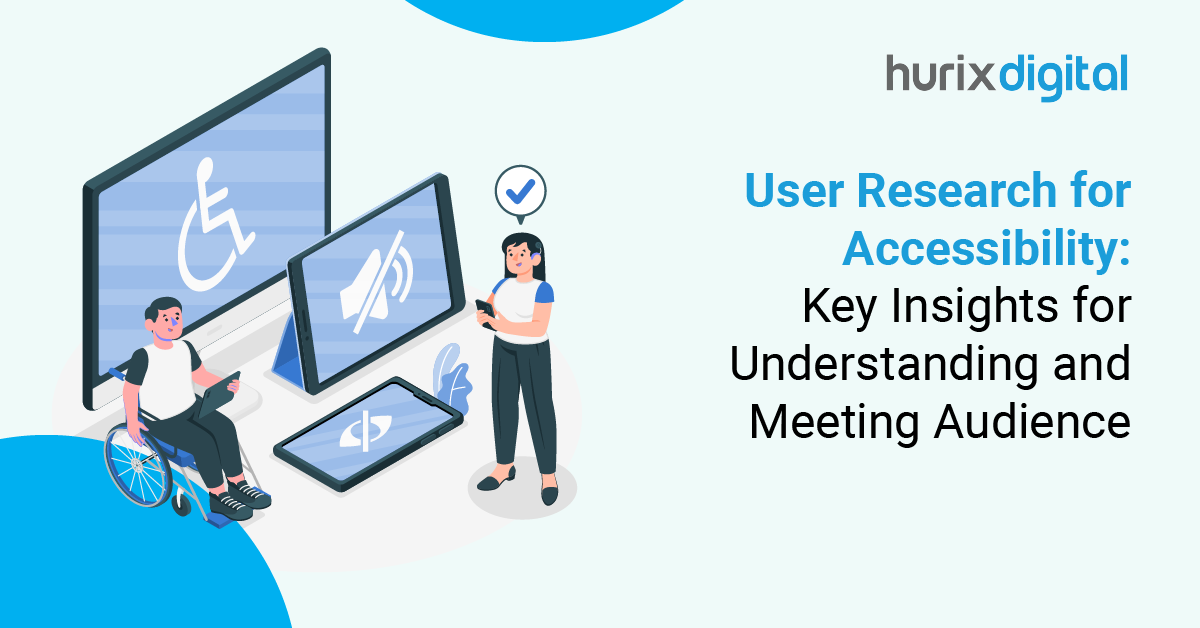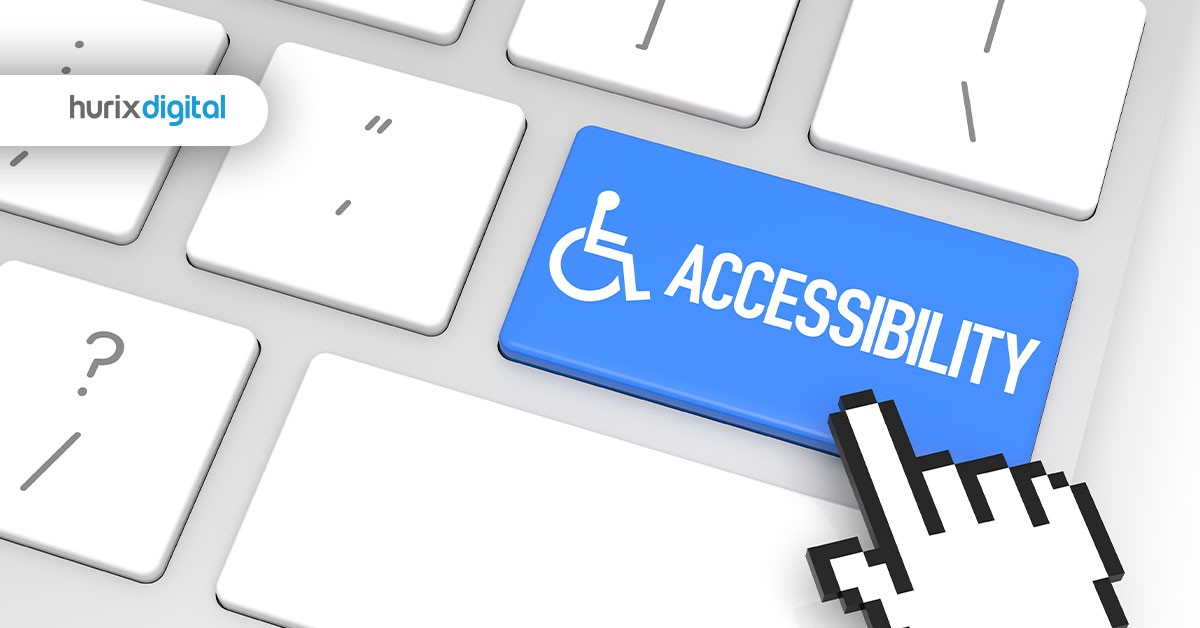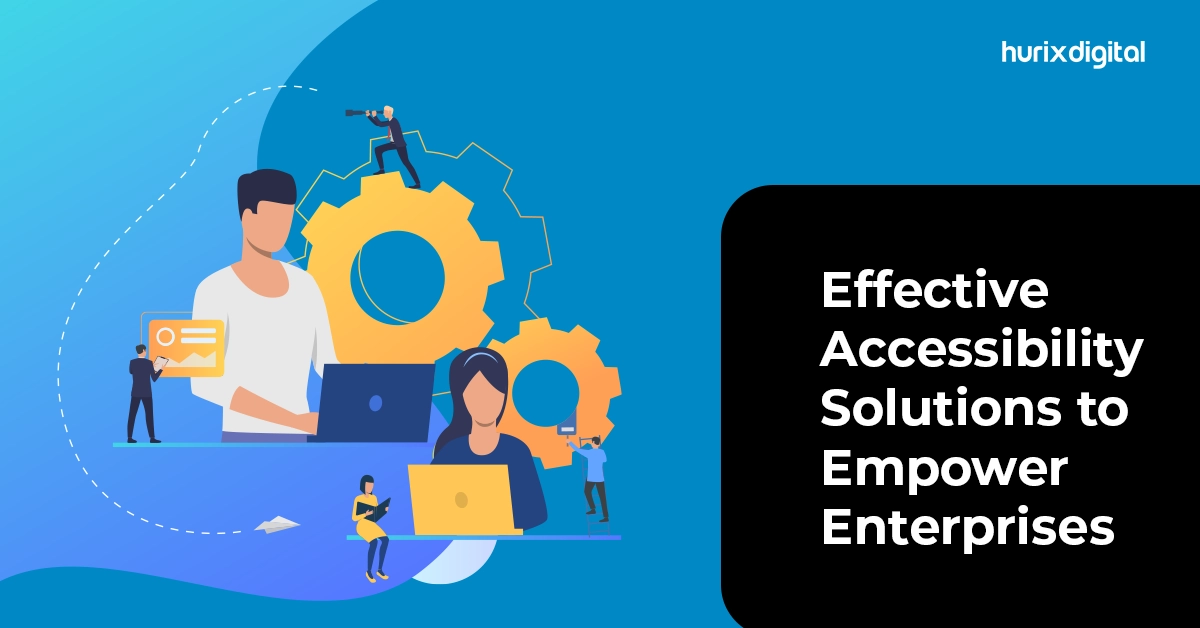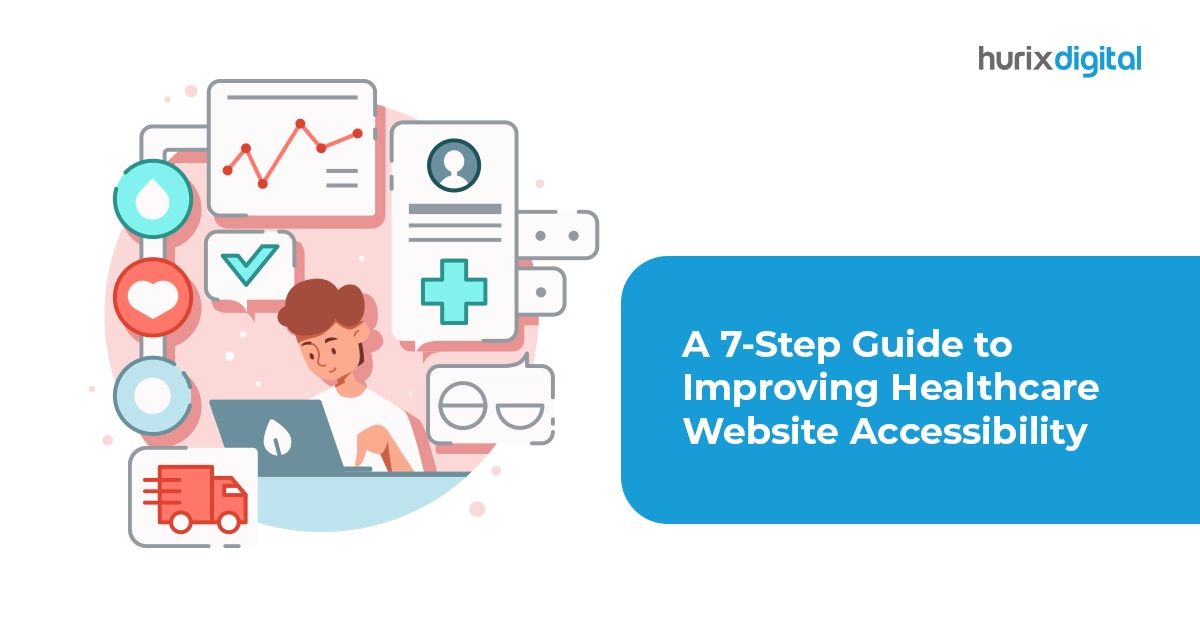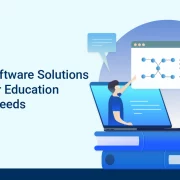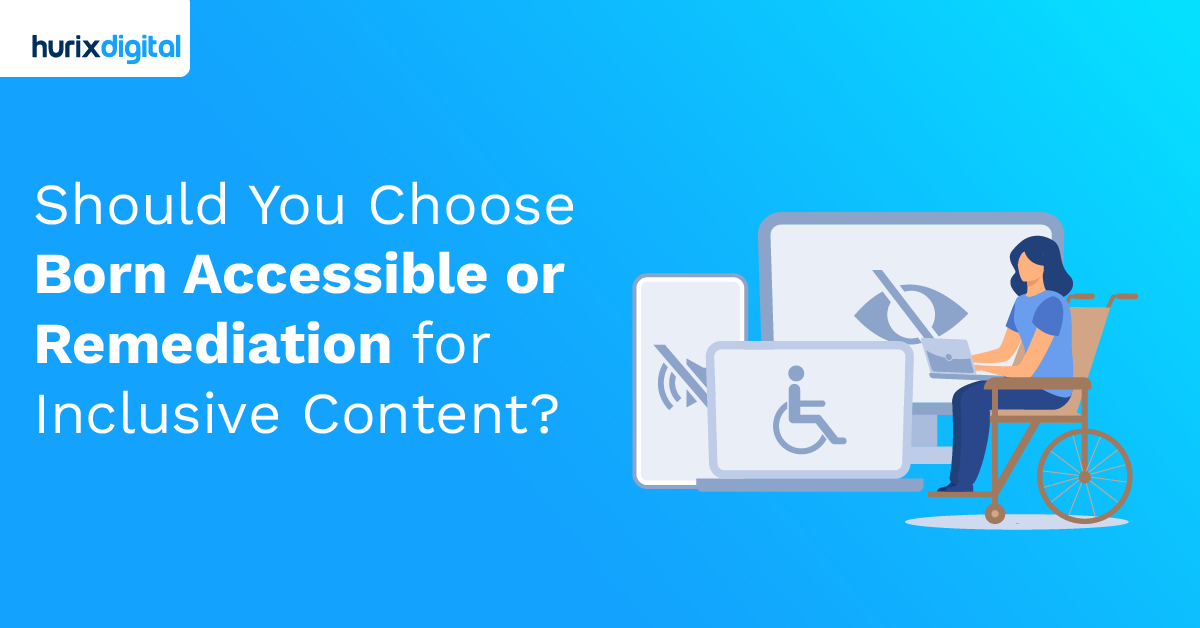
Should You Choose Born Accessible or Remediation for Inclusive Content?
Summary
Born accessible content ensures digital inclusivity by integrating accessibility from the start, reducing the need for costly remediation. It enhances user experience, meets legal compliance, and improves SEO. Challenges include awareness, technical complexity, and legacy content conversion. Overcoming these involves adopting accessibility guidelines, assistive technology compatibility, and future-proof content strategies.
In the evolving web accessibility landscape, ensuring that web content and digital products are accessible to all users, including those with disabilities, has become a priority for organizations worldwide.
As awareness grows, strategies aimed at achieving accessibility compliance are implemented. Two prominent methods have emerged in this endeavor: the born-accessible approach and accessibility remediation.
Table of Contents:
- The Gap in Digital Content Accessibility: Why it Matters?
- What Does Born Accessible Content Refer to?
- What is the Born Accessible Learning Approach?
- What is a Remediation Learning Approach?
- Born Accessible vs. Remediation: Which Approach is Right for You?
- Four Importance of Born Accessible Adoption in 2025 & Beyond
- Why do Born Accessible Documents Matter?
- Three Challenges in Born Accessibility Implementation
- 7 Effective Strategies to Overcome Challenges in Born Accessible Implementation
- Six Core Principles of Born Accessible Document Creation
- Designing for Accessibility: Top 6 Key Considerations
- Born Accessible Document Formats: Choosing the Right Fit
- 4 Tools and Techniques for Building Born Accessible Documents
- Born Accessible Best Practices: A Handy Checklist
- In Conclusion
The Gap in Digital Content Accessibility: Why it Matters?
Recent statistics highlight the critical need for accessible digital content. According to the World Health Organization, over 1.3 billion people worldwide live with some form of disability, representing nearly 16% (1 in 6 individuals) of the world’s population.
Given the current state of affairs, ensuring that digital platforms are inclusive has become paramount. The web accessibility standards, such as the W3C’s Web Content Accessibility Guidelines (WCAG), aim to provide a universal standard for digital accessibility solutions.
A recent report by WebAIM (Web Accessibility In Mind) revealed that 97.4% of the top 1 million home pages had detectable WCAG compliance failures. This highlights a significant gap in digital content accessibility, which exists for several reasons:
- Lack of Awareness: Many educational institutions and website developers are not fully aware of the importance of accessibility or how to make their content accessible. This leads to the creation of digital content that is not optimized for users with disabilities.
- Technical Challenges: Making digital content accessible often requires specific technical knowledge and tools. Many content creators may not have the resources or expertise to implement accessibility features effectively.
- Cost Considerations: Some organizations may perceive accessibility efforts as costly, especially if they are retrofitting existing content or websites. This can lead to reluctance to invest in accessibility improvements.
- Legal Compliance: While many countries have laws and regulations that require digital content to be accessible, enforcement and compliance are not always stringent. This can result in a lack of incentive for organizations to prioritize accessibility.
- Changing Technology: As technology evolves, new challenges and complexities arise in making digital content accessible. Keeping up with these changes can be challenging for organizations.
Closing the gap in digital content accessibility requires a combined effort from EdTech companies, developers, policymakers, and technology providers. This emphasizes the need for effective accessibility evaluation and implementation strategies.
What Does Born Accessible Content Refer to?
Born accessible is an umbrella term that refers to creating accessible books and content in general in such a way that they are inherently inclusive and usable by everyone, including individuals with disabilities.
The term “born accessible” emphasizes the idea that accessibility should be considered from the very beginning of the content creation process rather than being added as an afterthought or retroactively.
What is the Born Accessible Learning Approach?
The born-accessible approach refers to the practice of integrating accessibility compliance and web accessibility standards from the earliest stages of digital product development. This proactive strategy ensures that digital accessibility solutions are considered at every step, from design to deployment, making accessibility a core component of the development process.
The born-accessible strategy aims to create digital content accessible to all users by default, negating the need for subsequent modifications or remediation strategies.
Implementing a born accessible approach involves:
- Thorough accessibility assessment during the planning phases.
- Continuous accessibility evaluation throughout development.
- Adherence to WCAG compliance standards.
This method not only fosters inclusivity but also significantly reduces the time and resources required for post-launch accessibility adjustments.
What is a Remediation Learning Approach?
In contrast, the accessibility remediation learning approach focuses on addressing and correcting accessibility compliance issues in existing digital content.
Remediation strategies involve conducting an accessibility evaluation of current digital assets, identifying WCAG compliance gaps, and implementing necessary changes to meet web accessibility standards. This reactive approach is often employed by organizations looking to make their existing digital landscape accessible to all users, including those with disabilities.
Accessibility remediation can be a comprehensive process, depending on the extent of non-compliance and the complexity of the digital content involved. It requires a detailed accessibility assessment to highlight issues, followed by the application of digital accessibility solutions to resolve these problems.
Although remediation strategies are essential for enhancing the accessibility of existing content, they can be resource-intensive and may not address all potential accessibility barriers as effectively as the born-accessible approach.
Born Accessible vs. Remediation: Which Approach is Right for You?
When it comes to creating accessible digital content, two primary approaches exist: Born Accessible and Remediation. Each approach has its own set of benefits and considerations, and choosing the right one depends on various factors, including the nature of the content, the resources available, and the level of accessibility required.
For instance, the born-accessible approach involves creating digital content with accessibility in mind right from the start. This means incorporating accessibility features and best practices during the content creation process. Born accessible content tends to be of higher quality, as accessibility considerations are integrated seamlessly into the design and structure.
While it may require more upfront investment in terms of time, effort, and resources, creating content that is born accessible can be more cost-effective in the long run. It reduces the need for costly remediation efforts later on and is more likely to comply with accessibility standards and regulations, thereby reducing the risk of legal issues.
On the other hand, the remediation approach involves making existing digital content accessible after creation. This may include retrofitting content to add accessibility features or adjusting to improve accessibility.
Remediation can be useful if you have a large amount of content that needs to be updated. It provides flexibility in terms of when and how accessibility features are added, allowing you to prioritize content based on need or importance. Remediation also allows for incremental improvements in the accessibility of your content over time rather than having to address all accessibility issues at once.
However, remediation can be costly, especially for large volumes of content or complex remediation needs. It can also be time-consuming, especially if it requires significant changes or restructuring. Additionally, remediated content may not always achieve the same level of quality as born accessible content, as some accessibility features may be more difficult to integrate into existing content.
Four Importance of Born Accessible Adoption in 2025 & Beyond
From promoting inclusivity to tapping into new markets, accessibility implementation has endless benefits.
Let’s have a quick rundown on how having accessible strategies can help your business:
1. Reach Uncharted Territories
Around 1 in 8 people encounter difficulties reading or comprehending traditional prints. These include people with visual impairments and baby boomers. User-centered accessibility allows you to tap into unexplored markets and reach more users.
2. Make the Book More Noticeable
Born-accessible content makes your material more noticeable in the digital landscape. Search engines often prioritize accessible websites, enhancing your visibility and ensuring that your content reaches a broader audience.
3. Streamline Production
Born accessible adoption allows you to create a single accessible e-book and distribute it on different channels. This not only saves costs but also makes the publication process quick and streamlined.
4. Save the Expenditure on Retrofitting
Born accessible is a relatively new concept. Most legacy publications aren’t accessible, requiring the publishers to spend a subsequent amount on retrofitting. Accessibility implementation will not add to the retrofit expenditure.
Why do Born Accessible Documents Matter?
Creating Born Accessible Documents (BADs) isn’t just the right thing to do, it offers real benefits. BADs ensure inclusivity for everyone, regardless of ability, leading to a wider reach and an improved user experience.
Additionally, BADs can boost SEO rankings, comply with regulations, and save time and money compared to remediating inaccessible documents later. There are numerous compelling reasons to prioritize Born Accessible Documents:
- Inclusivity and Equal Access: Everyone deserves equal access to information. Born Accessible Documents remove barriers and empower individuals with disabilities to engage with content independently.
- Enhanced User Experience: Accessible documents are easier to navigate for everyone, not just those with disabilities. This translates to a better user experience for all.
- Legal Compliance: Many regions have legal regulations mandating the accessibility of digital content. Creating Born Accessible Documents ensures compliance with these regulations.
- Improved Search Engine Optimization (SEO): Accessible documents are often more easily indexed by search engines, potentially leading to increased website traffic.
- Cost-Effective Approach: Building accessibility in document creation from the start is significantly more cost-effective than retrofitting inaccessible documents later.
Three Challenges in Born Accessibility Implementation
Implementing born-accessible strategies may seem simple on paper, but in reality, it can be different. Some obstacles can make adoption difficult.
Here, we have listed some of the common challenges businesses face:
1. Lack of Collective Awareness
One of the major challenges in born-accessible adoption is the lack of collective and comprehensive awareness.
Many publishers remain unfamiliar with the intricacies of born-accessible principles, lacking a comprehensive understanding of this approach’s best practices, guidelines, and standards. This limited awareness ultimately impedes the seamless creation and adoption of accessible e-books.
2. Technical Complication
Creating accessible books requires proper coding. In addition, the content needs to adapt to advanced assistive technology devices so users can easily comprehend it. Also, the accessibility standards are updated periodically. Such technical complexities can make them difficult to implement born accessible.
3. Converting Printed Content to Digital
Publishers worldwide often contend with substantial backlogs of content, spanning both the print and digital realms, lacking adherence to accessibility standards. The endeavor to convert this legacy content into an accessible format is time-consuming and demands a significant allocation of resources.
7 Effective Strategies to Overcome Challenges in Born Accessible Implementation
While you may encounter roadblocks in implementing born accessible across the organization, there are some practical ways to clear these obstacles.
Here are some basic yet effective ways to overcome the challenges:
1. Identify Barriers to User-Centric Accessibility
For implementing born-accessible practices, you need to identify various barriers.
For example, apart from print disabilities, people with visual impairments and cognitive disabilities have difficulties in perceiving or understanding printed text. It’s important to identify these disabilities to implement accessibility standards smoothly.
Let’s understand this with an example: Most academic books have color-coded graphs. This information can be inaccessible to people with low vision or color blindness. Born accessibility focuses on using alt text so the screen reader can scan and comprehend it.
2. Make Digital Content Adaptable to Different Devices
As assistive technology advances, new devices and platforms have come up. Each of these devices has unique characteristics and features. Implementing born-accessible adoption ensures the content is displayed and accessed properly across different devices.
For example, your book should be accessible via desktop, laptop, e-readers, and wearables. It will help you reach a huge user base, irrespective of future device trends.
3. Compatibility with Different Assistive Technologies
Assistive technologies have evolved over the years. There are advanced screen readers, alternative input devices, and screen magnifiers, ensuring users with disabilities can access and interact with the content more effectively.
Make sure the books are compatible with different kinds of assistive technologies. It is also a great way to future-proof the content, as it remains usable with evolving technology.
4. Adapting to Evolving Accessibility Guidelines
Accessibility standards are continuously upgraded to fit the changing technological landscape and user requirements. It’s important to adapt to the latest accessibility guidelines and requirements. Taking this proactive step will make your books future-proof and stay updated with changing accessibility standards.
5. Repurpose the Content
Structured and formatted the content to make repurposing easier and more streamlined. Such content will help you reuse it in various formats. You can repurpose the content for an audiobook or EPub. It will help you create content that is adaptable for future formats without making additional modifications.
6. Adoption of Future Technology
Futuristic technologies are becoming more mainstream. There are VR and AR devices, along with voice assistants.
Make sure your content is seamlessly integrated with emerging technologies. Integrating a kid’s storybook into a VR device can help children with learning disabilities, such as dyslexia, understand the content most effectively.
7. Ensuring Longevity and Budget-Friendliness
Implementing born-accessible content from the outset helps reduce the overhead and time-consuming process of retrofitting accessibility measures. Since accessible content has a longer lifecycle, you can maintain and update it to meet future needs. In the long term, accessibility is cost-efficient and reduces maintenance expenditures.
Six Core Principles of Born Accessible Document Creation
At the heart of BADs lie core principles like assistive technology compatibility. Documents should be usable with screen readers and other tools people with disabilities rely on. Keyboard accessibility is also crucial, allowing navigation without a mouse. Clear and simple language, a logical structure, and descriptive text further enhance usability for everyone.
Here are the fundamental principles upon which Born Accessible Document creation is built:
- Usability for All: Documents should be usable by individuals with diverse needs, including those with visual, auditory, physical, or cognitive impairments.
- Keyboard Accessibility: Users should be able to navigate and interact with documents using only a keyboard.
- Screen Reader Compatibility: Documents should be structured and coded to be compatible with screen readers used by visually impaired individuals.
- Alternative Text Descriptions: Images and non-text content should have clear and concise alternative text descriptions for those who cannot see them.
- Clear and Consistent Structure: Documents should have a logical structure with clear headings, proper formatting, and consistent use of styles.
- Color Contrast: Color combinations should provide sufficient contrast for users with visual impairments.
Designing for Accessibility: Top 6 Key Considerations
Accessibility extends beyond technical aspects. Consider color contrast. People with visual impairments may struggle with low contrast between text and background. Think about design elements. Don’t rely solely on color to convey information, as some users may not perceive colors accurately.
Designing with accessibility in mind is crucial for creating Born Accessible Documents. Consider these key points:
- Content Structure: Semantic HTML tags (headings, paragraphs, lists) convey document structure.
- Headings: Structure headings logically to create a clear hierarchy and ease of navigation.
- Tables: Ensure that tables have clear headers, captions, and proper data organization for compatibility with screen reader.
- Links: Descriptive link text should convey the destination of the link.
- Font Size and Readability: Use clear and readable fonts with sufficient size for all users.
- Multimedia: Provide captions and transcripts for audio and video content.
Born Accessible Document Formats: Choosing the Right Fit
Several document formats promote accessibility. HTML offers inherent accessibility features and works well for web-based content. EPUB is ideal for ebooks and allows for a flexible reading experience. PDF remains popular, but ensure it includes accessibility features like tagged structure and alternative text.
Below is the list of document accessibility guidelines:
- HTML (HyperText Markup Language): The foundation of web pages, HTML can be used to create highly accessible documents with proper coding and formatting.
- WCAG (Web Content Accessibility Guidelines) Compliant PDF: While PDFs can be inherently less accessible, creating them using WCAG guidelines can significantly improve their accessibility.
- EPUB (Electronic Publication): An ideal format for ebooks and long documents, EPUB offers excellent accessibility features and supports various assistive technologies.
- Accessible DOCX (Microsoft Word Document): Modern versions of Microsoft Word allow the creation of accessible documents with built-in features and tools.
4 Tools and Techniques for Building Born Accessible Documents
Creating BADs doesn’t require specialized software. Popular tools like Microsoft Word and Google Docs offer built-in accessibility features. Utilize heading styles, alternative text descriptions, and semantic HTML elements for proper content structure. Many online resources and tutorials can guide you further.
Several tools and techniques can streamline the creation of Born Accessible Documents:
- Accessibility Checkers: Online tools like WAVE and the Accessibility Checker in Microsoft Office can identify potential accessibility issues.
- Screen Readers: Testing documents with screen readers helps identify areas where navigation or content presentation might be unclear.
- Color Contrast Checkers: Tools like WebAIM’s Contrast Checker ensure sufficient color contrast for optimal readability.
- Keyboard Navigation Testing: Testing how the document can be navigated solely with a keyboard exposes areas requiring improvement.
Born Accessible Best Practices: A Handy Checklist
This checklist empowers you to create BADs with confidence. Here’s a handy checklist that will help you:
- Use appropriate heading structures (H1, H2, etc.)
- Include alternative text descriptions for all images.
- Maintain good color contrast between text and background.
- Use semantic HTML elements (lists, tables, etc.) for proper structure.
- Ensure documents are keyboard navigable.
- Test your documents with assistive technologies.
In Conclusion
Born accessible has become the need of the hour. It not only fulfills legal obligations but also helps your publishing business get more traction.
However, implementing born-accessible strategies can be complex. It requires a meticulous approach involving a blend of technological expertise, a commitment to inclusivity, and adherence to evolving accessibility standards.
Building Born Accessible Documents is a commitment to inclusivity and a valuable step towards a more equitable information landscape. By following these tips and best practices, you can create documents that are accessible, user-friendly, and compliant with regulations.
Hurix Digital can help you navigate the world of BADs and ensure your content reaches everyone. Contact us today to discuss your accessibility needs and create inclusive documents.

Vice President – Digital Content Transformation. He is PMP, CSM, and CPACC certified and has 20+ years of experience in Project Management, Delivery Management, and managing the Offshore Development Centre (ODC).
